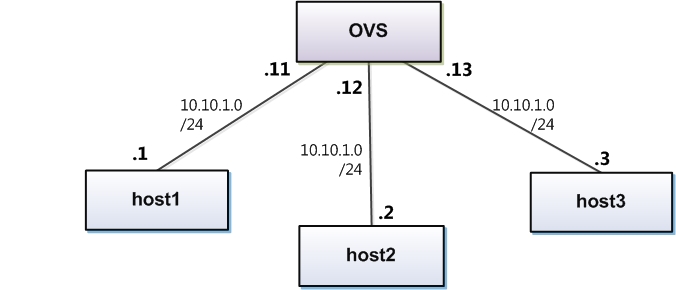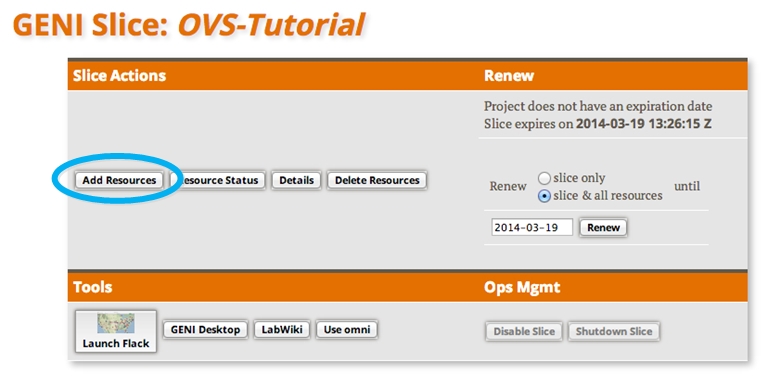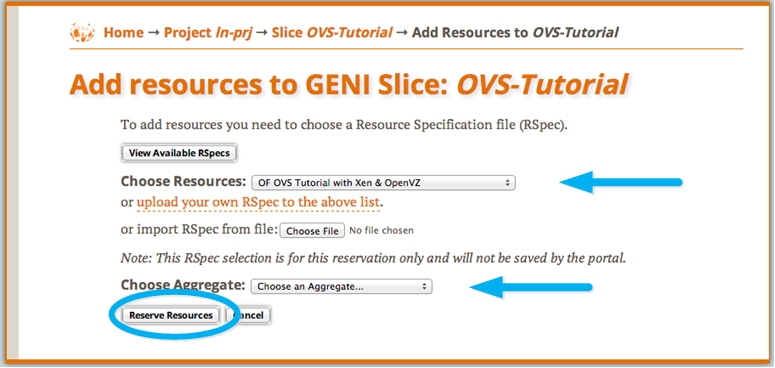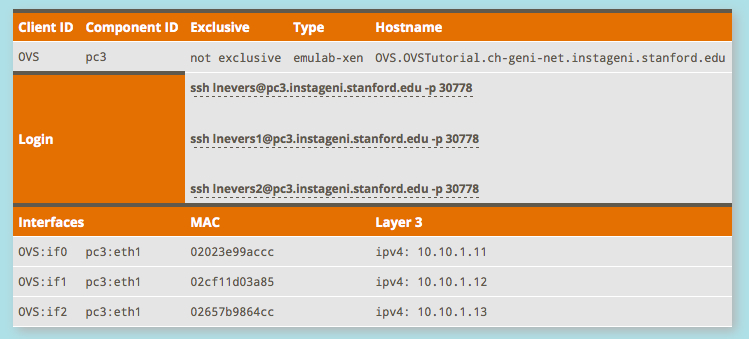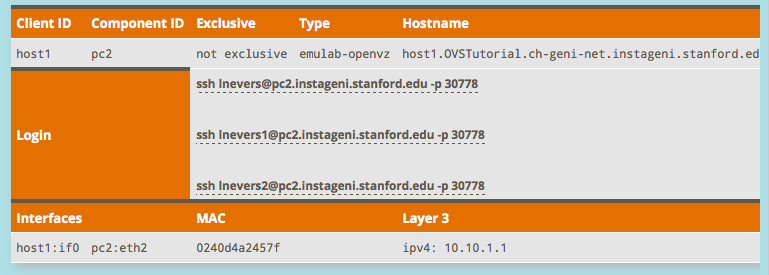| Version 23 (modified by , 10 years ago) (diff) |
|---|
Intro to OpenFlow using OVS

Step 1. Obtain resources
This tutorial can use compute resources from any InstaGENI rack, with one exception. This tutorial cannot be run on the Utah DDC rack because it does not have OpenVZ resources available. For a list of available InstaGENI racks see the GENI Production Resources page. The experiment will need:
- 1 Xen VM to be the OpenFlow switch
- 3 OpenVZ containers VMs as hosts
To create the topology required for this tutorial you can use any of the reservation tools available (Omni, Flack, or the GENI portal) for the purpose of this experiment we will use the GENI Experimenter Portal.
1. Login to the GENI Experimenter Portal at https://portal.geni.net.
2. Go to the Projects panel and click on the "Create Slice" button for the tutorial project. (If you are running this tutorial on your own, you may use any existing project.) On the resulting page named "Create New Slice" enter a unique slice name and click on "Create slice" button. For the purpose of this tutorial we will assume the slice is named OVS-Tutorial.
3. On the slice page (Home → Project MyProject → Slice OVS-Tutorial) select the "Add Resources" button:
5. On the "Add resources to GENI Slice: OVSTutorial" page use the "Choose Resources" pull to select the RSpec named "OF OVS Tutorial with Xen & OpenVZ". Then use the "Choose Aggregate" pull-down to select the InstaGENI Rack aggregate assigned to you. (If you are running this tutorial on your own, you may use any InstaGENI aggregate, except Utah DDC.) Now click on the "Reserve Resources" button.
6. As resources are allocated there will be updates to the "Creating Sliver on slice: OVSTutorial" page and once completed you should see details for all nodes and links in the sliver. Below is an example output for the "OVS" Xen VM:
Below is an example output one of the OpenVZ VMs allocated for this experiment:
We are now ready to run the experiment!!!

